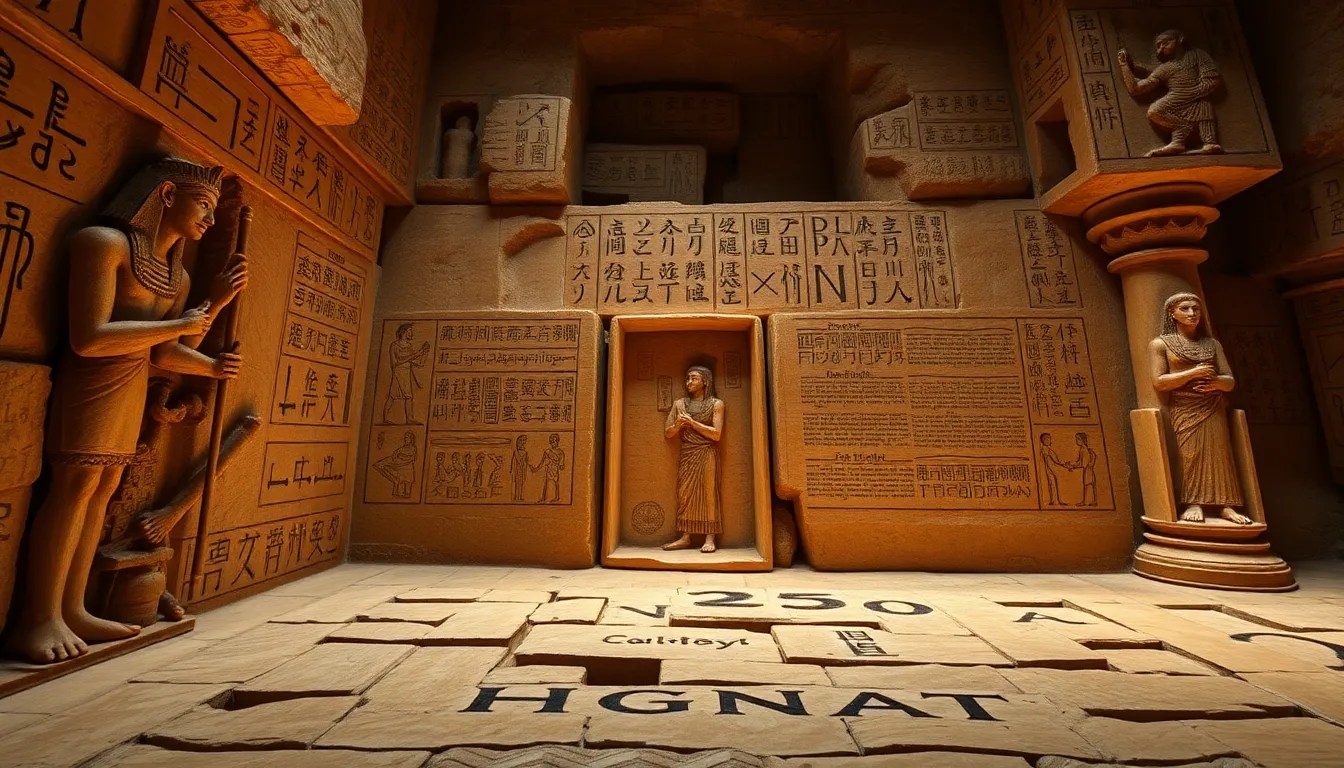The Influence of Tomb Texts on Ancient Egyptian Religion
I. Introduction
The tomb texts of ancient Egypt are a collection of inscriptions, spells, and prayers that were placed in the tombs of the deceased. These texts served not only as a guide for the deceased in the afterlife but also as a reflection of the spiritual beliefs and cultural practices of ancient Egyptian society. Their significance extends beyond mere funerary practices, touching upon the very essence of ancient Egyptian religion.
This article aims to explore the historical context, types, functions, theological implications, and evolution of tomb texts, highlighting their crucial role in shaping ancient Egyptian religion and their lasting legacy in the study of ancient spirituality.
II. Historical Context of Ancient Egyptian Religion
Ancient Egyptian religion was a complex system of beliefs centered around the worship of a vast pantheon of gods and goddesses. The Egyptians believed in an afterlife where the soul would journey through various challenges, ultimately facing judgment before Osiris, the god of the afterlife.
- Polytheism: The Egyptians worshipped numerous deities, each governing various aspects of life and nature.
- Afterlife Beliefs: The concept of Ma’at, or cosmic order, was essential for ensuring a successful journey to the afterlife.
- Tomb Text Development: Tomb texts evolved significantly through different dynasties, reflecting changes in religious thought and societal norms.
III. Types of Tomb Texts
There are three primary types of tomb texts, each representing different stages in the evolution of funerary literature in ancient Egypt.
A. Pyramid Texts
1. Origins and Characteristics
The Pyramid Texts are among the oldest religious texts in the world, inscribed in the pyramids of the Old Kingdom (circa 2686–2181 BCE). They are primarily found in the pyramids of pharaohs and are composed in hieroglyphs.
2. Major Themes and Purposes
The major themes of the Pyramid Texts include:
- Protection of the pharaoh in the afterlife
- Invocation of deities for assistance
- Spells for resurrection and eternal life
B. Coffin Texts
1. Transition from Pyramid Texts
As the Middle Kingdom (circa 2055–1650 BCE) emerged, the Coffin Texts began to appear. These texts marked a shift in funerary practices, becoming accessible to non-royal individuals.
2. Variations and Adaptations
The Coffin Texts included many spells that were adapted from the Pyramid Texts, with variations that reflected the broader social context of the time.
C. Book of the Dead
1. Structure and Content
The Book of the Dead, developed during the New Kingdom (circa 1550–1070 BCE), is a compilation of spells and illustrations designed to assist the deceased in navigating the afterlife. It was often personalized for the individual.
2. Importance in Funerary Practices
This text became a staple of funerary practices, emphasizing the importance of spells for protection and guidance during the journey through the Duat (underworld).
IV. Function of Tomb Texts in Funerary Practices
Tomb texts played a critical role in the funerary practices of ancient Egypt, serving several key functions:
- Guidance for the Deceased: The texts provided instructions and spells that guided the soul on its journey through the afterlife.
- Protection from Malevolent Forces: Many spells were aimed at warding off evil spirits and ensuring safe passage.
- Rituals and Spells for Resurrection: Certain rituals were designed to facilitate the resurrection of the deceased, allowing them to join the gods in the afterlife.
V. Theological Implications of Tomb Texts
The theological implications of tomb texts are profound, reflecting the complex nature of ancient Egyptian beliefs:
- Reflection of the Egyptian Pantheon: Tomb texts often invoked various gods, showcasing their diverse and multifaceted nature.
- Concepts of Morality and Judgment: The texts illustrate beliefs about the judgment of the soul, emphasizing the importance of living a virtuous life.
- Representation of the Afterlife and Immortality: The texts articulate a vision of the afterlife as a continuation of life on earth, full of joy and abundance.
VI. Tomb Texts as Historical Sources
Tomb texts offer invaluable insights into the social, political, and cultural structures of ancient Egypt:
- Insights into Social and Political Structures: The texts reflect the hierarchy of society and the importance of the pharaoh as a divine ruler.
- Evidence of Daily Life and Cultural Practices: They provide glimpses into the customs, beliefs, and daily activities of the ancient Egyptians.
- Influence on Later Religious Developments: Tomb texts influenced later religious thoughts, including beliefs in immortality and resurrection in other cultures.
VII. The Evolution of Tomb Texts Over Time
As ancient Egyptian religion evolved, so too did the tomb texts:
- Changes in Language and Style: Over the centuries, the language and stylistic elements of the texts adapted to reflect contemporary dialects and artistic trends.
- Adaptation to New Religious Beliefs: As new gods and practices emerged, tomb texts incorporated these elements, illustrating the dynamic nature of Egyptian spirituality.
- Influence of External Cultures and Religions: Interaction with other cultures, such as the Greeks and Romans, led to further adaptations and interpretations of tomb texts.
VIII. Conclusion
In summary, tomb texts are a vital component of ancient Egyptian religion, providing critical insights into their beliefs and practices regarding the afterlife. Through understanding these texts, we gain a deeper appreciation for the spiritual life of the ancient Egyptians and their quest for immortality.
The lasting legacy of tomb texts continues to influence modern interpretations of ancient spirituality, reminding us of the fundamental human desire to understand life, death, and what lies beyond.
